Mu Cang Chai is a small rural district located in the mountains of the Yen Bai Province in Northwestern Vietnam (about 300 km from Hanoi). Famous for its terraced rice fields (over 2,000 hectares worth), the Ministry of Culture, Sports and Tourism has designated a large portion as a National Heritage Site.
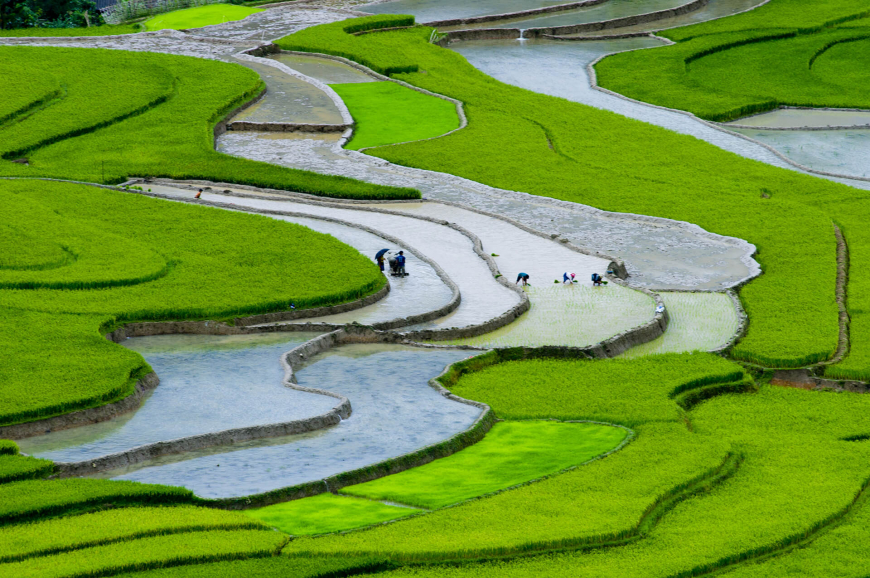
Mu Cang Chai is visually breathtaking year-round, but the planting and harvest seasons seem to draw the most attention. The harvest occurs from September to October—certainly a site to behold, as traditionally dressed locals reap the fields of its ripened, golden-yellow bounty. Not long after, in December, the hillsides are plush with wild peach blooms. But it’s the planting time (aka The Water Pouring Season) that offers the most remarkable, surreal scenes of breathtaking beauty. From late May to early June, after the rains have fallen, farmers direct water from the top of the mountain to the furrowed fields, creating reflecting ponds (capturing the clouds, sky and sun). This is when the locals begin planting the rice seedlings. The sight is otherworldly. Imagine gullies of reflective water—a colorful mosaic—glittering in the terraced terrain of lush green hills.
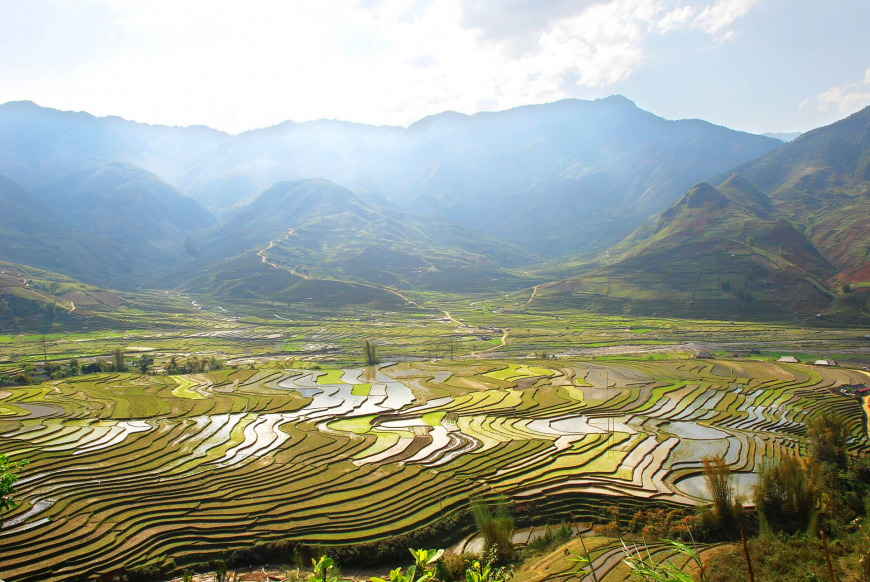
While the majority of Mu Cang Chai’s population is made up of the ethnic H’Mong people, there are a smattering of other ethnic groups as well (including the Thai and Dao). Therefore, the district is chock-full of culture: music, folk art, traditional foods and crafts. There are multiple festivals held during The Water Pouring Season. One such festival is called: “Flying over Pouring Water on Terraced Fields”, which takes place on Khau Pha Pass (“Flying in the golden season” happens during harvest time). Visitors can view the terraced landscapes while paragliding over the valley (the festival includes food, music, dance et al). Khau Pha Pass offers the ideal view of the terraced fields, the ancient forests and the surrounding mountains. In addition, there are Water Pouring Season festivities happening in surrounding communes and villages (such as Che Cu Nha, La Pan Tan, Thai Nam Kim, Khao Pha and De Xu Phinh). Spiritually and culturally, The Water Pouring Season is a reaffirmation, a period of great joy and celebration throughout Mu Cang Chai.
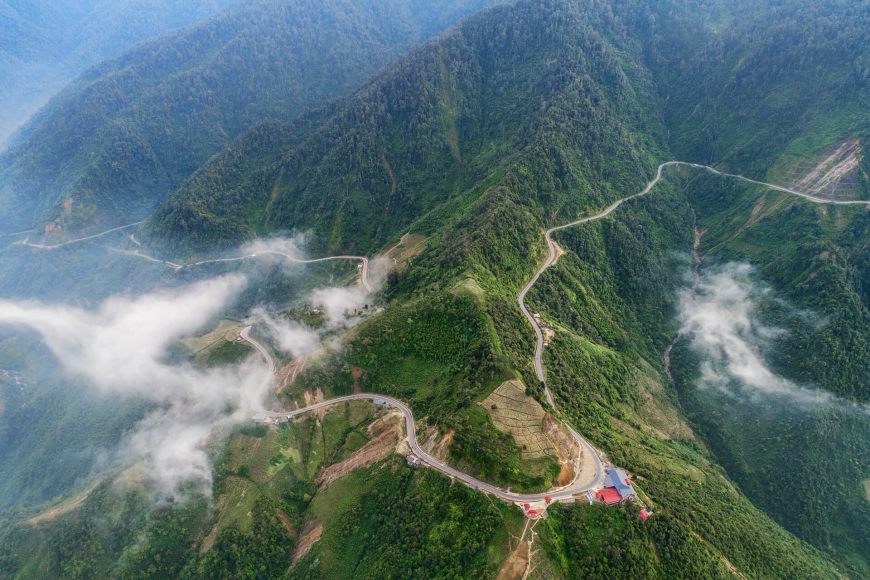
If soaring is not your thing, there’s a host of sites and exciting entertainment options to behold during the seed planting time.
Mo Waterfall is a fantastical destination (emboldened by rains during the wet season). All four shelves of the falls can be reached by foot. The cascading water fills the air with mist and the rumbling falls echo throughout the surrounding jungle. Various blooms of multiple colors burst from the foliage, creating an eye-popping palette.
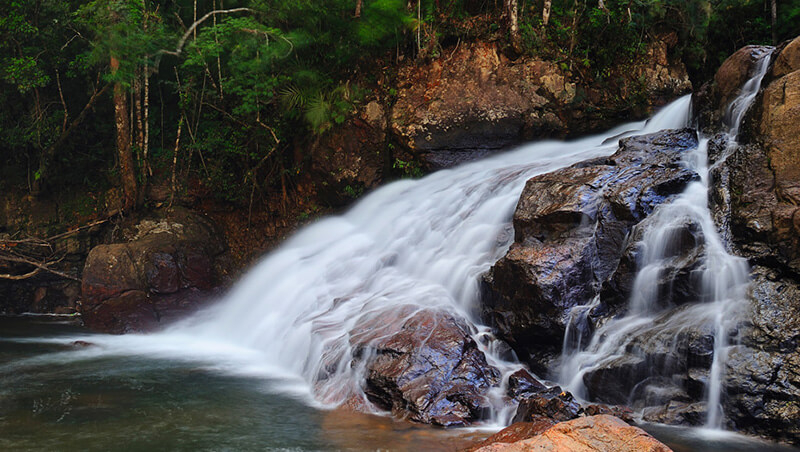
Source: Internet
Mam Xoi Hill is the unofficial viewing platform of the rice fields. From here they can be viewed in all their splendor. It’s quite a slog to get to the top of the hill, the roads are not easy to navigate (particularly when wet), so it’s advised you find a local driver (there are plenty available). Viewing the snaky patterns of the rice trenches from above is like looking at heavenly fingerprints with all their ridges, valleys, furrows, loops and whorls.
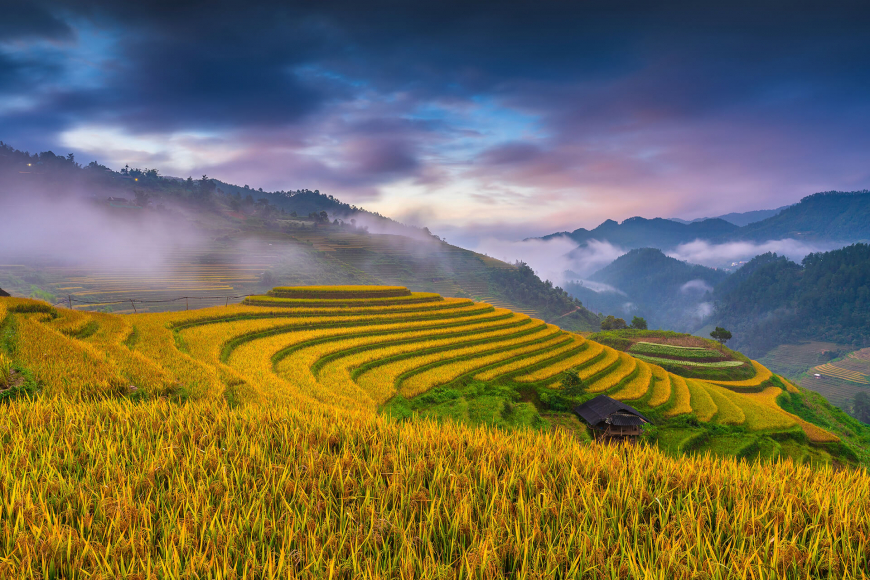
Na Hang Tua Chu bamboo forest is about 20 km from Mu Cang Chai town. This is where locals gather bamboo shoots (which are a delicacy of the region). Walking amongst the giant bamboo stalks (some as tall as 30 feet) while the wind rustles and birds serenade, creates an otherworldly chorus.
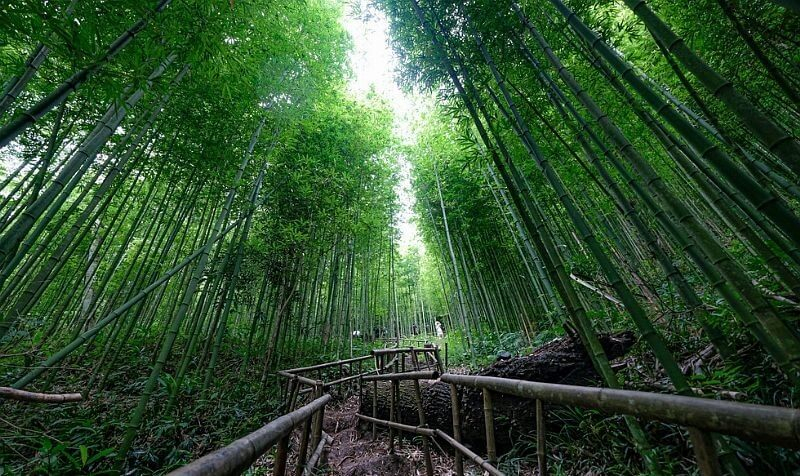
Source: Internet
For those wishing to add adrenalin to the sublime, you might consider Aeris Hill (an adventure game area). Not only does Aeris Hill provide the longest zipline in Vietnam (1.2km) but it offers striking views of the terraced rice fields, forests, mountains and rivers. Along with the zipline, Aeris Hill also offers Vietnam’s first Zorbing (riders are secured inside a large, transparent ball and rolled down a hill). There is also high wire walking (swaying bridges and dangling wheels), a variety of wall climbing systems, as well as swings which take you over the abyss. There are flower gardens and koi ponds. Adventure tourism at its finest.
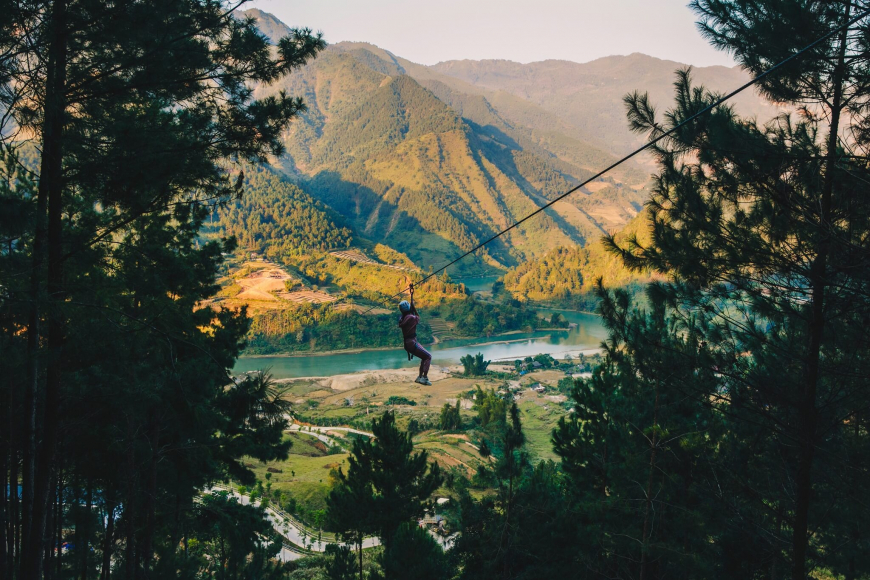
Source: Facebook - Aeris Hill
Further afield (100 km from Mu Cang Chai) is Tram Tau and its famous mineral hot spring. Fed from an underground source, this locale offers homestays for those wishing to both soak and stay the night.
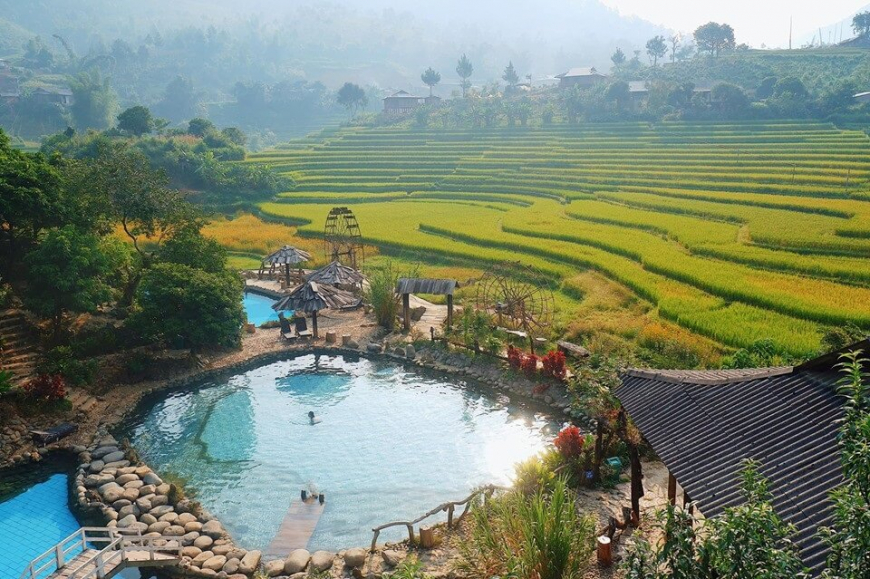
Source: Internet
Since the mountainous hideaway of Mu Cang Chai is renowned for its terraced rice fields, especially during The Water Pouring Season, you should plan your itinerary accordingly. Reserve the last week of April to the first week of May for the experience. Take advantage of this small window of opportunity. You won’t regret it.
Weather: Mu Cang Chai has two distinct seasons: The cold/dry season (November through March) and the hot/rainy season (April through October). September through October is harvesting time while April and May are the primary planting period. While Mu Cang does receive plenty of precipitation, the rains are sporadic.
Getting There: Hanoi is about 300 km from Mu Cang Chai and offers various options of transport to the remote, mountain paradise. Buses, trains and motorbikes are your best bet. There are multiple bus companies that make the daily trek (Tip: most Vietnamese buses offer state-of-the-art coaches, many with sleepers—and at a low fare). While there are no direct trains from Hanoi to Mu Cang Chai, there are daily trains to Yen Bai, where passengers can switch seamlessly to buses to complete the trek. Motorbiking is another popular option, with so much to see and so many terrains to traverse it’s no wonder this has become a favored form of transport for the intrepid traveler.



